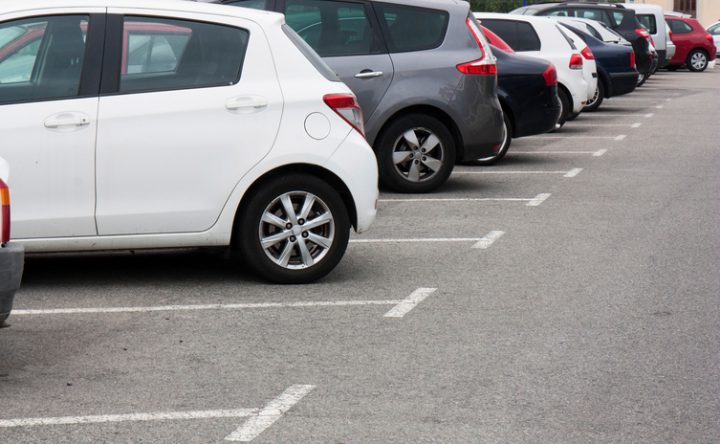Imagine jumping out of your autonomous car in front of a sports stadium or concert hall, and then simply walking away as it parks itself.

When you’re ready to head home, it makes its way back to you. No more hunting for a spot. No more scratches or dings as the driver of the car next to yours swings open his door.
WATCH: Will driverless cars make jobs like pizza delivery go extinct?

As driverless cars (also known as autonomous vehicles) start to become more commonplace on Canada’s roads, researchers at the University of Toronto say that parking lots — and how they operate — will be one of the urban spaces that could see the most profound changes.
READ MORE: Canadian companies bracing for car hackers with ‘nefarious’ intent
In a new study published in the journal Transportation Research: Part B, a team from the university’s Transportation Research Institute used a combination of imagination and computer modelling to show how autonomous vehicles might park themselves in neat, orderly rows.
The space between each vehicle would be negligible since no drivers would be getting in or out. That, in turn, would mean a big drop in the amount of land needed for lots.

Get breaking National news
“We show that autonomous vehicle car-parks can decrease the need for parking space by an average of 62 per cent and a maximum of 87 per cent,” the researchers noted.
That extra space, they argued, “can be socially beneficial if car-parks are converted into commercial and residential land-uses.”
Because there wouldn’t be a need for lines to distinguish spaces, the design of the lot could also shift as demand increases. It might take longer to retrieve a vehicle the more packed it becomes, but on the flipside, you could fit more cars in.
Freeing boxed-in cars
Of course, there are a few potential problems. First, what if your car is parked right smack in the middle of the lot, surrounded by others on all sides?
In that case, the UofT team explained, the outer cars would obviously need to move out of the way, directed by a central lot operator.

The hard part was finding the right balance between minimizing the number of such moves you need to make to retrieve a car in the middle, while also being careful not to waste space. The research team designed an algorithm to help them come up with various scenarios that optimize both.
Another potential challenge, however, is congestion. The lots would need to remain close to major attractions in cities. Otherwise, the researchers noted, you’ll have a lot of cars driving themselves quite a distance to the nearest one, clogging up major downtown arteries.
That would certainly not be in line with the stated priorities of many Canadian cities, which are investing heavily in bike lanes and public transit.
WATCH: A closer look at autonomous vehicles
_848x480_1165085251567.jpg?w=1040&quality=70&strip=all)
Finally, the models also assume a reality that’s still years away: one in which every vehicle in the parking lot is fully self-driving (although some lots could have designated sections for autonomous and non-autonomous vehicles).
“We’re talking about large numbers of vehicles that can fully drive themselves, with no requirement for a driver to take over if something goes wrong,” said the study’s senior author, Matthew Roorda, in a release.
“There’s a lot that has to happen before we get to that stage.”
The team’s research was funded by the Ontario Research Fund, as well as a consortium of industrial partners.









Comments